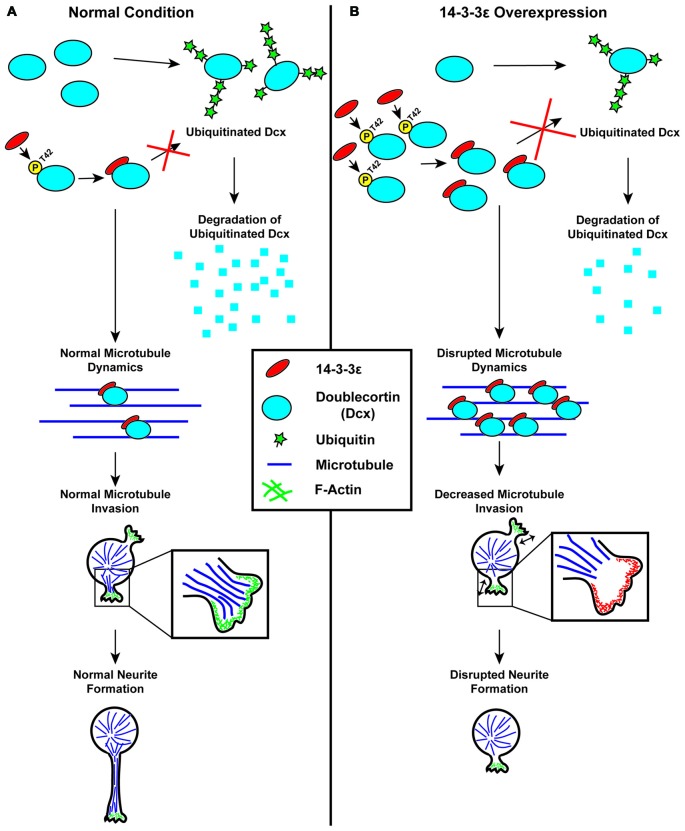Figure 5.
Schematic illustration of the regulation of neurite initiation by 14-3-3ε during cortical development. (A) Under normal conditions, 14-3-3ε binds to doublecortin (Dcx) at phosphorylated threonine-42 (P-T42). The remaining Dcx that is not bound to 14-3-3ε is rapidly ubiquitinated and subsequently degraded. Dcx stabilized by 14-3-3ε will then bind to microtubules, allowing for normal microtubule dynamics. During neurite initiation, microtubules are able to enter and stabilize lamellipodia allowing for normal neurite initiation. (B) When 14-3-3ε is overexpressed, there is increased binding of 14-3-3ε to Dcx, preventing its ubiquitination and subsequent degradation, resulting in an increase in Dcx protein levels. The increased Dcx binds to microtubules in excess, and this disrupts normal microtubule dynamics. This prevents microtubules from invading lamellipodia type structures during neurite initiation thus inhibiting normal neurite formation.

